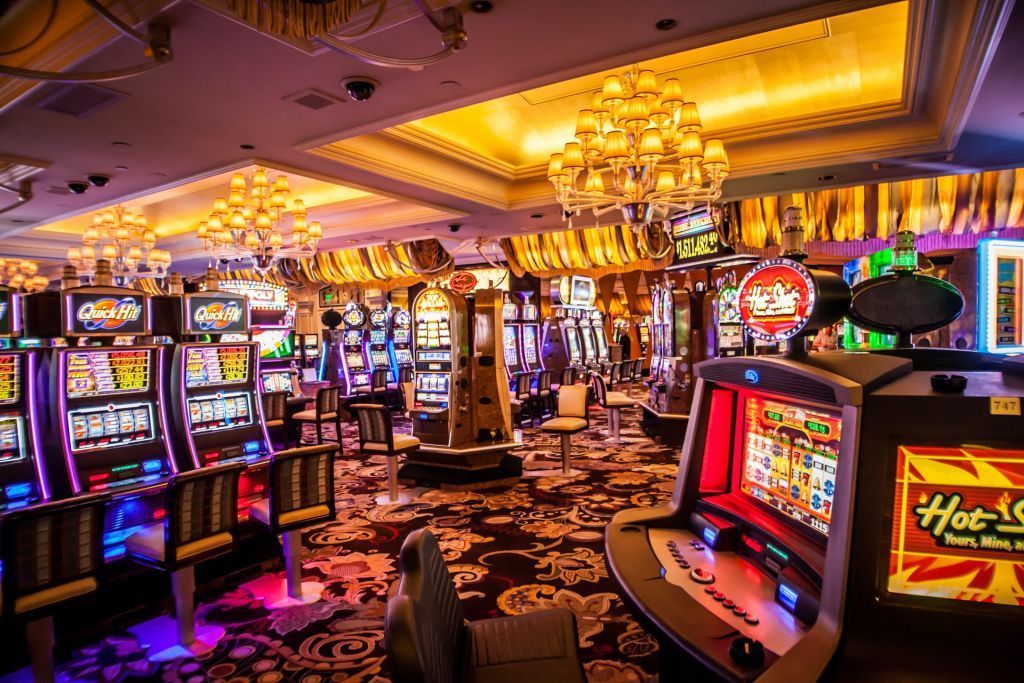The history of fruit machines is a fascinating adventure that mirrors the evolution of amusement and betting over the generations. Starting from their simple start in the late 19th century to becoming a fixture in gaming halls across the planet, these games of fortune have undergone notable evolutions. Casino slots games have enthralled players with their vibrant graphics, immersive storylines, and the potential of wealthy jackpots.
Originally made as mechanical machines with turning reels and limited icons, slot machines have transformed into sophisticated electronic games that feature modern tech and engaging features. Currently, they welcome millions of players, each aspiring to strike it lucky with just the pull of a lever or the tap of a button. Exploring the intriguing past of these devices discloses not just the story of a beloved pastime, but also a mirror of cultural shifts and technological advancements over the years.
One of the Birth in Slot Machines’ History
The story of slot machines begins in the final years of the 19th century, a time when machines were increasingly popular in places of amusement. A groundbreaking slot machine came into existence by Charles Fey in 1895, referred to as the Liberty Bell. This machine featured 3 spinning reels and five symbols: hearts, diamonds, spades, a horseshoe, and the famous Liberty Bell. Players would pull a lever to spin the reels, and if the symbols aligned in a specific combination, they would win a payout. Fey’s invention quickly captured the attention of gamblers and set the foundation for future developments in casino slots games.
As the idea of the slot machine gained popularity, various inventors looked to enhance Fey’s design. By the early 1900s, slot machines were becoming a frequent presence in saloons and amusement parks. In 1907, the initial electromechanical slot machine was introduced by Herbert Mills, which featured a more intricate system of payout mechanisms and the iconic fruit symbols that are still associated with slots today. This evolution marked a major shift in the gaming industry, as machines became more engaging and user-friendly, attracting more players.
The popularity of slot machines continued to soar throughout the early 20th century, resulting in their widespread adoption in casinos across the United States. However, the rise of legal restrictions on gambling during the Great Depression posed challenges for the industry. Many machines were outlawed, but this did not halt innovators. Instead, they adjusted by creating machines that gave out candy or gum instead of cash prizes, effectively bypassing the restrictions while still providing the thrill of a casino slots game. This creativity kept the spirit of gambling intact, setting the stage for the future resurgence of slot machines in modern casinos.
Development of Slot Machine Technology
The background of slot machines commenced in the final 19th century with the invention of the early mechanical machines. Charles Fey, a West Coast mechanic, presented the Liberty Bell in 1895, which featured three revolving reels and five symbols: hearts, diamonds, spade symbols, a lucky horseshoe, and the Liberty Bell itself. This simple yet enthralling appearance laid the basis for the progress of casino slots game, creating an instant attraction for gamblers seeking fun and a opportunity to gain.
As innovation progressed, so did the design and functionality of slot machines. By the mid 20th century, electronic mechanical machines surfaced, including electronic elements to enhance gameplay and amplify payout chances. These improvements enabled for greater complexity features like multiple paylines and larger jackpots. The casinos embraced these advances, resulting in the rise of gambling devices as a major source of revenue within the gambling sector, radically changing the experience of playing slots.
The late 20th and early 21st centuries introduced the age of digital technology, leading to the debut of digital slots. These devices replaced traditional reels with digital screens, permitting even more creativity in themes and gameplay features. Gamblers could now experience immersive graphics and sound effects, along with dynamic bonus rounds. The transition to online casinos further revolutionized the casino slots game, rendering slots reachable to a global population whenever and wherever, thus marking a fresh chapter in the evolution of gambling device innovation.
The Social Influence of Gaming Machines
Slot machines have become more than just a means of entertainment; they have woven themselves into the essence of mainstream culture. From movies and television shows to music and literature, these iconic gaming machines often act as symbols of chance and risk. Films like The Casino and Ocean’s Eleven notably feature slots, depicting them as thrilling yet unpredictable elements of the casino atmosphere. Their unique attraction lies in the noise of coins falling, the revolving reels, and the bright flashing lights, which together create an exhilarating atmosphere that draws people in.
Moreover, slot machines have influenced social gatherings and events, making them a focal point in casinos and gaming venues. Numerous individuals do not just go to a casino to gamble; they attend for the full experience, which includes the social interactions and the lively ambiance surrounding these machines. Special contests and themed gaming nights centered around slots also showcase their popularity, fostering social connections and collective fun among players. This social element has contributed to the machines’ lasting popularity. gavn99

The evolution of technology has further transformed this cultural impact. Digital and online slots have broadened access to these games far beyond the walls of physical casinos. Players can now enjoy their favorite casino slots game from home or on the move, leading to the rise of online communities and forums where enthusiasts share strategies and experiences. The continuous innovation in game design and the inclusion of storytelling have kept the cultural importance of slot machines alive, attracting younger audiences while maintaining a tie to their cultural roots.